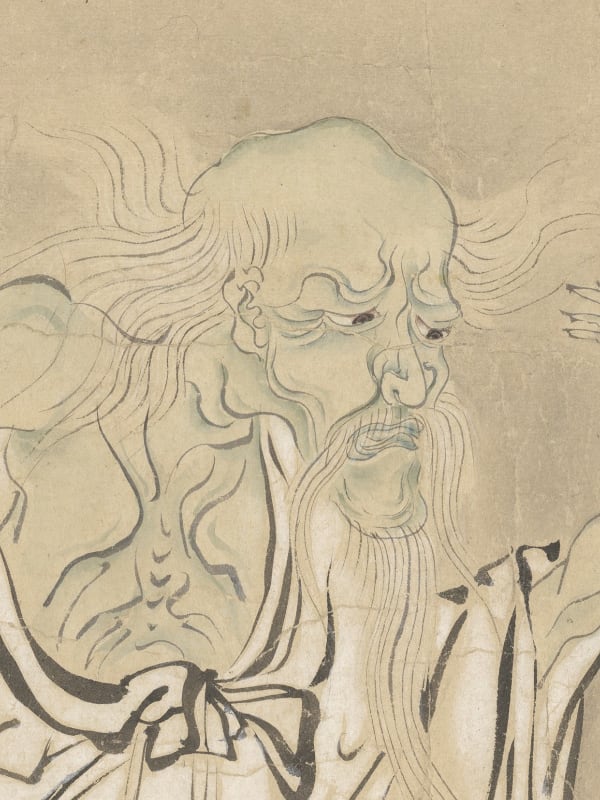
And so we turn to fairytales. I don’t mean the softened modern children’s story versions, but the hard-core, often brutal originals. They usually don’t have any moral: they’re not fables. Instead, they are fanciful stories that occasionally go in the direction of fable, often in the direction of religion, sometimes taking us nowhere but a place of fear and bleak despair. They are more sophisticated versions of campfire ghost stories.
Best I can tell, and I have not studied it extensively, most cultures have fairytales or something similar. It might be more accurate to describe them as folk tales. From England we get “Jack and the Beanstalk,” from Ireland we get stories about leprechauns and the banshee. The brothers Grimm were German. We contributed “Paul Bunyan” and others. On it goes, from everywhere. There is seldom a happy ending; “sad but wiser” is usually the best we can hope for. Don’t believe me? Read the original “Hansel and Gretel.” It is gruesome and awful.
Perhaps of special interest to us now is “The Emperor’s New Clothes,” in which the vain and pompous emperor is told that his magnificent new garments are invisible to fools. Of course, the clothes do not exist at all, and the emperor traipses around naked. The people, not wanting to be thought fools, all comment on how exquisite the emperor’s garments are and cheer when he talks about about Making the Empire Great Again. It takes a small boy to point out that the emperor is wearing no clothing at all. In the fairytale, the boy is hailed a hero, and here it departs from real life. As we can clearly see in our country today, in reality the small boy would have been denounced as a “SINO” — subject in name only — and stoned to death.
Or we might consider the “Pied Piper.” Here, the town is beset by rats. A pipe player negotiates with the villagers and they reach agreement. He plays his pipes and leads the rats away. But the people renege on the agreement and he is not paid. He plays his pipes again. This time, it’s the town’s children who follow him, not to be seen again. In the real world, he would simply say there is no rat problem, and would have drugs and surgery imposed on the children so they would no longer be either boys or girls. Oh, and he would insist on being given more money to solve the problem he says doesn’t exist.
Those are two stories familiar in the West. Asia does much the same thing, even more seriously. In Japan, you will hear of the yokai, the general category of imps, trolls, and supernatural creatures. They include the dreaded Oni, a fierce and stern yokai especially famous for tending to children who misbehave. “If you don’t go to bed, I’ll call the Oni,” an exasperated parent might say. There are even special festivals where people dressed as Oni frighten small children, giving the bedtime threat a tinge of reality. There are yokai for every purpose, such as the one who steals your good dreams and replaces them with bad ones.

Folk tales are sometimes made to explain things. We have the Greek myth — those are folk stories, too — of Narcissus, the young man who was so attractive that he fell in love with his own reflection. Nemesis, a goddess, exacted justice by letting him know he would never be loved as much as he loved himself. He killed himself and from his body sprang the narcissus flower that is among spring’s first arrivals. Here, we have the folk tale of Johnny Appleseed, based on a real man, John Chapman. (Today, he would work for the government and would sow the seeds of dangerous, spiny, invasive foreign plants.)
The Japanese — I turn to them again because their stories are very vivid, well documented, and in no way sugar-coated — have the Kappa. Like other yokai, the Kappa are more or less believed to be real things. They resemble child-sized humans, though they have reptilian skin, a turtle-like shell, and a bowl-shaped impression in the top of their heads. They live in rivers and streams.
I recently heard their origin, which is true and chilling. Long-ago, when families were large and poor, the emperor raised the taxes, which at the time were paid in rice. Many people starved as a result. It became the mother’s job to kill the very young children, so there would be enough food for those who remained. This was often done by bashing them on the head, smashing their skulls. Their small bodies were deposited in the nearest waterway, which would carry them away. As the history of this unhappy time was passed down, the little dead children were said to have become Kappa, the dents in their heads being to collect rain so they would always be near water. Even now, along waterways, people are admonished not to let the Kappa reach from the water and grab their ankles.
People, all people I think, want to believe in something. It is most commonly as religion, but religions are complicated and often require someone to intervene between us and God. We’ve gone to great pains to establish the authenticity of our religions. But for those whose analytical skills stop at the level of a third-grade sleepover, who want to believe something but don’t want to invest any time or thought in it, faith is frequently misplaced.
Where once people sought entertainment and sometimes an explanation in traditional tales, which don’t involve contemplation, many of us now want to believe in something, anything, that doesn’t require us to think but which once chosen we can support fully. Something that relieves us from the demands of reality. Sadly, it doesn’t take much.
Monday was the anniversary of the Great East Japan Earthquake and its subsequent tsunami. Before the day was over I saw a post said to be a speech by a former local mayor in Fukushima Prefecture in which he was reported to have said, “The government knew about the occurrence of the earthquake and tsunami on March 3. . . . 3/11 is a man-made disaster. We are truly frustrated that we have suffered a tragedy created by the government.” The post had 2.5 thousand “likes.”
Now, anyone who gives this the slightest thought knows not only that it is not true but that it cannot be true. The power released by the earthquake was 1.9Ã10-to-the-17th joules. That’s a lot. How much? Well, far more than all the world’s atomic bombs detonated at once. Even if the Japanese government (or some conspiracy of governments) had inexplicably wanted to destroy many coastal fishing villages and kill 22,000 people, wreck a nuclear power plant, and render a vast swath of the country uninhabitable, they couldn’t have.
Yet people saw the item, said, “Hmmm,” took it as truth, and went on, that non-fact now in their minds. Elon Musk himself has said that for every “like” there are 100 views, which seems about right. In which case 250,000 people saw the post and a fair number of them now think the Japanese government planned and brought about the terrible disaster known as 3/11. Even though it is plainly impossible.
People believe it because they are desperate to believe something, have some explanation, some excuse. The planet erupts and does tremendous damage, and it can do so at any time and in any place. That’s too frightening to accept. An evil cabal in the government did it? That’s something we can wrap our heads around.
You name the bad event and I’ll find the modern fairytale, actually embraced by people capable of operating a computer, that explains it in a fanciful, ridiculous fashion. The nonsense “QAnon” “movement” is a fraudulent prank invented on the degenerate, malicious 4chan website, where users laughed as the story, deliberately as ridiculous as possible, was followed by many intelligence-challenged people, and some others who want influence over the stupid and gullible. Everything connected with it is dark falsehood. Yet people are eager to back its entirely fabricated claims.

There are a lot of people who will believe any old thing, even if it is an obvious, demonstrable, malicious lie. The liars don’t even need to seem to be telling the truth. Our love of tales has turned into something else, something malignant. It involves a subtle but crucial distinction: while our old stories sometimes sought to explain reality, the ones embraced now are designed to reject reality.
Here’s another example: for days now, the media have been filled with breathless accounts of the inauthenticity of a a publicity picture of a princess. (Fairytales frequently involve princesses.) This was interrupted in the U.S. yesterday by breathless coverage of a prosecutor who had concluded after a long investigation that one of two old crazy men, both currently competing to be President of the United States, is so old and crazy that he can’t be prosecuted. A different prosecutor had concluded that the other crazy old man is not too old and crazy to be prosecuted for the identical crime. People argued bitterly about it while never acknowledging that the two are both too old and too crazy to be given any responsibility. (Likewise their ardent followers, some of whom are not old but meet the other requirement.)
In another room just a few feet away, officials who are in charge of defense, law enforcement, and information gathering were testifying that the United States is in greater peril from overseas enemies than at any time in our 248-year history. That received very little coverage. Don’t distract our audience with the unpleasant truth, the news editors apparently said.
When on Sunday people whose profession is pretense gathered to give prizes to each other, it drew more coverage and conversation than real threats to the very existence of our country and of us.
The phenomenon of our seeing everything through a fantasy story lens was described very well by the once-funny “The Onion” more than 22 years ago, after another tragic date ending in 11: “Shocked and speechless, we are all still waiting for the end credits to roll. They aren't going to.”
Our rejection of reality and embrace of nonsense instead has led us to a very dangerous place. “Hey, I know what let’s do. Let’s get two crazy old men, one enfeebled and easily led by policy delusionists, the other governed entirely by personal animus, greed, and desire for revenge against the country that rejected him, and have them fight it out. And the winner gets the nuclear codes.” Thus we have the very serious, when-fairytales-were-gruesome version of the pitiful dispute between a drooling, lying old coot of whom it is considered a miracle that he can stand up and shout for more than an hour, and a career criminal in orange makeup, high on his own intestinal gas, for whom it would be a miracle if he ever told the truth about anything.
As the brilliant reviewer Will Jordan puts it when he’s signaling the approach of cinematic disaster, “Nah, it’ll be fine.”
We’re about to find out, perhaps terminally, the difference between reality and fantasy. It’ll arrive in the coming months when we choose between Senile Gray Biden Hood and Trumplestiltskin.
No matter who wins, there’s no “happily ever after” involved.

Dennis E. Powell is crackpot-at-large at Open for Business. Powell was a reporter in New York and elsewhere before moving to Ohio, where he has (mostly) recovered. You can reach him at dep@drippingwithirony.com.
You need to be logged in if you wish to comment on this article. Sign in or sign up here.
Start the Conversation